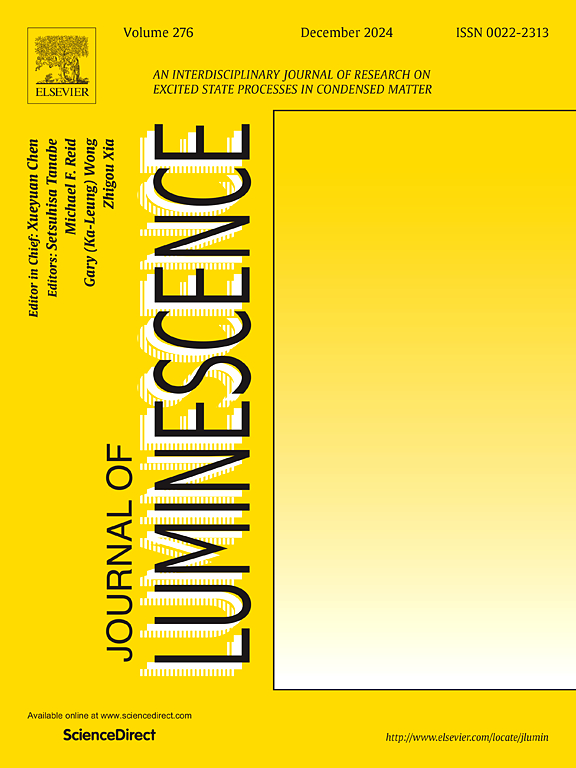Radio- and optically stimulated luminescence of Dy-doped MgB4O7 phosphor
IF 3.3
3区 物理与天体物理
Q2 OPTICS
引用次数: 0
Abstract
The radioluminescence (RL) and optically stimulated luminescence (OSL) properties of dysprosium doped magnesium tetraborate have been investigated for the first time. MgB4O7:Dy3+ was synthesized by ceramic and solution-assisted methods. X-ray diffraction (XRD) patterns corroborate the crystalline phase of MgB4O7 obtained. Scanning electron microscopy revealed aggregates and porous regions in the MgB4O7 phosphor. Radioluminescence showed an intrinsic emission band at approximately 370 nm and two other narrow bands at 480 nm and 575 nm associated to 4F9/2→6HJ transitions of the Dy3+ ion, with J = 15/2 and J = 13/2, respectively. The optically stimulated luminescence properties after beta irradiation were analyzed, and the Dy-doped MgB4O7 showed a linear dose response over the range studied.
掺镝MgB4O7荧光粉的无线电和光学激发发光
本文首次研究了掺镝四硼酸镁的辐射发光(RL)和光激发发光(OSL)性质。采用陶瓷法和溶液辅助法合成了MgB4O7:Dy3+。x射线衍射(XRD)图证实了所得到的MgB4O7的晶相。扫描电镜显示MgB4O7荧光粉中有聚集体和多孔区。Dy3+离子的4F9/2→6HJ跃迁在370 nm处有一个本征发射带,在480 nm和575 nm处有两个窄带,分别为J = 15/2和J = 13/2。分析了β辐照后的光激发发光特性,在研究范围内,掺镝的MgB4O7表现出线性剂量响应。
本文章由计算机程序翻译,如有差异,请以英文原文为准。
求助全文
约1分钟内获得全文
求助全文
来源期刊

Journal of Luminescence
物理-光学
CiteScore
6.70
自引率
13.90%
发文量
850
审稿时长
3.8 months
期刊介绍:
The purpose of the Journal of Luminescence is to provide a means of communication between scientists in different disciplines who share a common interest in the electronic excited states of molecular, ionic and covalent systems, whether crystalline, amorphous, or liquid.
We invite original papers and reviews on such subjects as: exciton and polariton dynamics, dynamics of localized excited states, energy and charge transport in ordered and disordered systems, radiative and non-radiative recombination, relaxation processes, vibronic interactions in electronic excited states, photochemistry in condensed systems, excited state resonance, double resonance, spin dynamics, selective excitation spectroscopy, hole burning, coherent processes in excited states, (e.g. coherent optical transients, photon echoes, transient gratings), multiphoton processes, optical bistability, photochromism, and new techniques for the study of excited states. This list is not intended to be exhaustive. Papers in the traditional areas of optical spectroscopy (absorption, MCD, luminescence, Raman scattering) are welcome. Papers on applications (phosphors, scintillators, electro- and cathodo-luminescence, radiography, bioimaging, solar energy, energy conversion, etc.) are also welcome if they present results of scientific, rather than only technological interest. However, papers containing purely theoretical results, not related to phenomena in the excited states, as well as papers using luminescence spectroscopy to perform routine analytical chemistry or biochemistry procedures, are outside the scope of the journal. Some exceptions will be possible at the discretion of the editors.
 求助内容:
求助内容: 应助结果提醒方式:
应助结果提醒方式:


